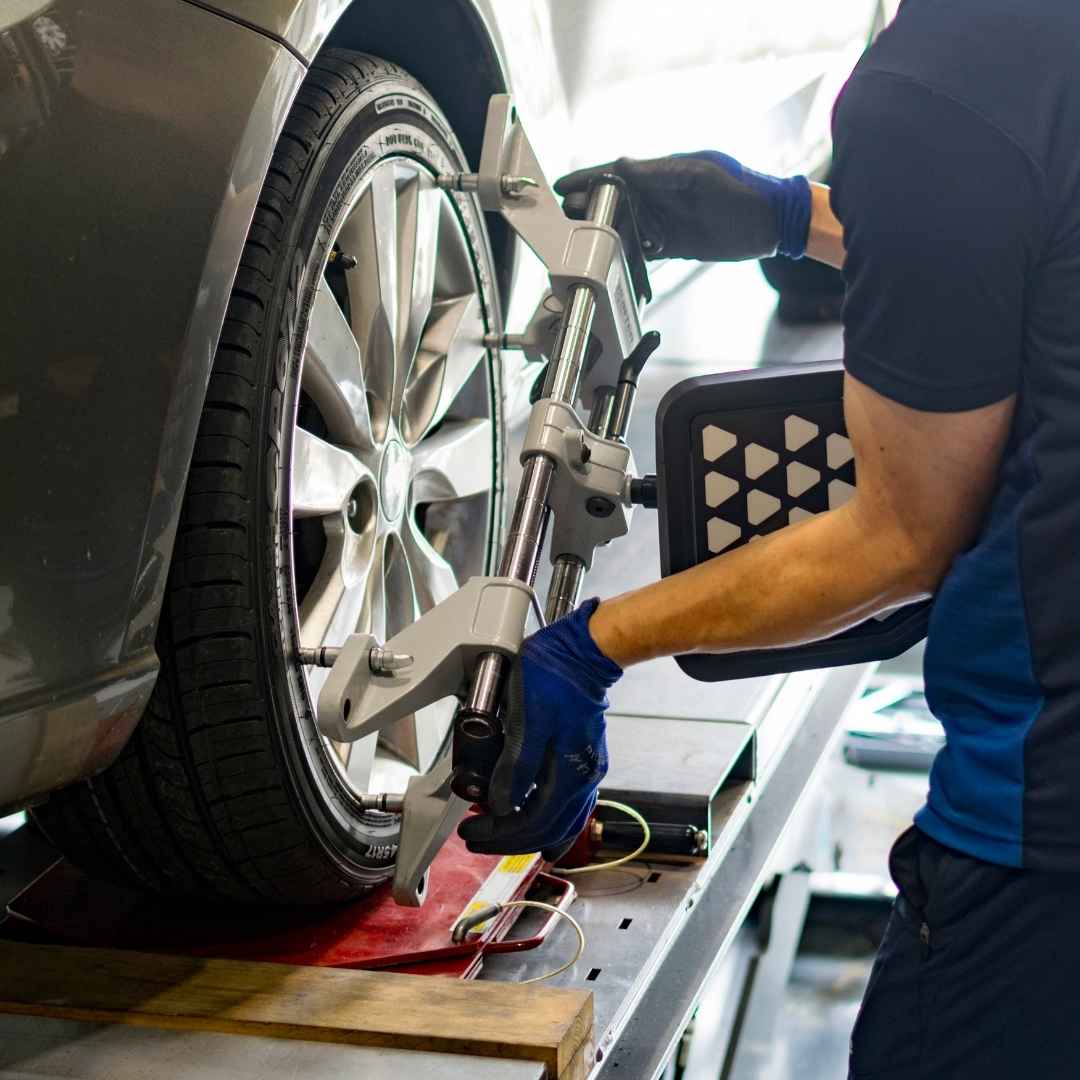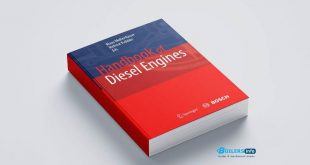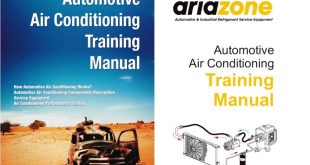Wheel Alignment and Wheel Balancing
Wheel alignment and wheel balancing are critical maintenance tasks for vehicles. These processes ensure that tires wear evenly, improve handling, and enhance overall safety and fuel efficiency. Misaligned wheels or unbalanced tires can cause significant problems, such as vibrations, uneven tire wear, and reduced control over the vehicle. Proper maintenance of wheel alignment and balancing not only ensures a comfortable driving experience but also prolongs the life of tires, suspension systems, and other related components.
Table of Contents
ToggleVehicles and Wheels
Wheels serve as the primary contact point between a vehicle and the road. They are crucial for ensuring stability, comfort, and safety during a drive. Modern vehicles are equipped with different types of wheels and tires designed for specific conditions and purposes. For example, all-season tires are commonly used for their adaptability to varying weather conditions, while performance tires are designed for high-speed vehicles to provide superior grip and handling. The materials used in wheels, such as steel or aluminum alloys, contribute to their durability and weight characteristics. Proper maintenance of wheels, including regular checks for wear, tear, and alignment issues, ensures optimal performance and minimizes the risk of accidents.

Causes of Tire Wear
Tire wear is a natural consequence of driving, but certain factors can accelerate this process:
- Improper Wheel Alignment: Misaligned wheels cause uneven tire wear, leading to premature damage.
- Unbalanced Wheels: An imbalance in wheel weight distribution causes vibrations and irregular wear patterns.
- Driving Habits: Aggressive braking, sharp cornering, and rapid acceleration can increase wear.
- Road Conditions: Potholes, uneven surfaces, and debris contribute to tire damage.
- Tire Pressure: Underinflated or overinflated tires wear unevenly and compromise handling.
Wheel Alignment and Wheel Balancing
Wheel alignment and balancing are often confused, but they serve distinct purposes. Wheel alignment involves adjusting the angles of the wheels so they are parallel to each other and perpendicular to the road surface. This ensures that the vehicle drives straight and reduces tire wear. On the other hand, wheel balancing focuses on equalizing the weight distribution of the wheel and tire assembly to eliminate vibrations and improve ride quality. Both procedures are necessary to maintain vehicle safety and performance, and neglecting either can result in costly repairs and reduced efficiency.
What Is Wheel Balancing?
Wheel balancing ensures that the weight of the tire and wheel assembly is evenly distributed around the axis. When a wheel is unbalanced, it causes vibrations that increase with speed, making the ride uncomfortable and potentially dangerous. Over time, this imbalance can lead to uneven tire wear, damage to suspension components, and strain on the steering system. Wheel balancing involves detecting and correcting these imbalances by attaching small weights to specific points on the wheel. Regular wheel balancing during tire rotations or replacements is essential for maintaining optimal vehicle performance.
Reasons for Unbalance in Wheels
There are several reasons why a wheel might become unbalanced. Manufacturing variations in tires and wheels can lead to slight weight inconsistencies, even in new products. Uneven tire wear, which develops over time, can also shift the balance. External factors, such as hitting potholes or curbs, can bend the wheel rim or damage the tire, causing significant imbalances. Additionally, debris like mud or snow stuck to the wheels can alter their weight distribution. Regular inspections and cleaning can help prevent such issues and maintain balance.
Single Plane Balancing
Single-plane balancing focuses on correcting imbalances on one axis, usually the horizontal plane. This method is commonly used for smaller or lighter vehicles, where the dynamics are less complex. It is effective in eliminating vibrations that occur in a single direction and ensures a smoother driving experience. However, for larger or high-performance vehicles, more comprehensive balancing methods may be required.
Two Plane Balancing
Two-plane balancing addresses imbalances on both the inner and outer sides of the wheel. This method is crucial for vehicles with wider tires or those operating at higher speeds, as it ensures stability and reduces wear on the suspension system. By correcting imbalances in both planes, two-plane balancing provides a more comprehensive solution to the problems caused by unbalanced wheels.
Wheel Balancing Machine—Description
A wheel balancing machine is an advanced tool designed to detect and correct weight imbalances in wheels. Equipped with sensors and digital displays, the machine spins the wheel to identify areas of imbalance and suggests where corrective weights should be placed. Modern machines offer high precision and user-friendly interfaces, making the balancing process efficient and accurate. These machines are essential for automotive workshops, ensuring that vehicles leave the shop with perfectly balanced wheels.
Wheel Balancing Machine—Installation
Installing a wheel balancing machine requires careful preparation to ensure accuracy and reliability. The machine should be placed on a flat, stable surface to avoid measurement errors. Proper electrical grounding and voltage compatibility are also crucial for smooth operation. After installation, the machine must be calibrated to maintain precision in its readings. Routine calibration and maintenance checks are necessary to ensure that the machine continues to deliver accurate results.
Wheel Balancing—Procedure
The wheel balancing procedure begins with a thorough inspection of the tire and wheel assembly. The wheel is then securely mounted on the balancing machine, which spins it at high speed to measure vibrations and detect weight imbalances. Based on the machine’s recommendations, small weights are attached to the wheel to correct the imbalance. The wheel is spun again to confirm that the balance has been achieved. This process is repeated for each wheel to ensure the vehicle operates smoothly and efficiently.
Wheel Balancing—Two Wheelers
Wheel balancing is equally important for two-wheelers like motorcycles and scooters. Due to their lighter weight, these vehicles are more sensitive to vibrations caused by imbalanced wheels. The procedure for balancing two-wheeler wheels is similar to that for cars, but it often requires smaller weights and more precise adjustments. Proper wheel balancing enhances the stability and safety of two-wheelers, especially at higher speeds.
Wheel Alignment of Light Vehicles
Wheel alignment in light vehicles, such as sedans and SUVs, involves adjusting the wheels to meet the manufacturer’s specifications. Proper alignment ensures that the vehicle drives straight, reduces tire wear, and improves fuel efficiency. Misalignment in light vehicles often results from hitting potholes, curbs, or other obstacles. Regular alignment checks and corrections are essential to maintaining the safety and performance of these vehicles.
Parameters Affecting Wheel Alignment
Several parameters determine wheel alignment accuracy:
Camber
The inward or outward tilt of the tire when viewed from the front of the vehicle.
Caster
The forward or backward tilt of the steering axis when viewed from the side.
Toe
The direction in which the tires point relative to each other when viewed from above.
Charge Coupled Device (CCD) Technology
Charge Coupled Device (CCD) technology has revolutionized wheel alignment by providing highly accurate measurements. CCD sensors capture real-time data on wheel angles, which is analyzed by a computer to determine alignment corrections. This technology enhances the precision and efficiency of the alignment process, making it an invaluable tool for modern automotive workshops.
3D Wheel Alignment Computer and Its Accessories
A 3D wheel alignment system uses advanced cameras and sensors to create a three-dimensional model of the wheel alignment angles. Accessories such as targets, which reflect data to the cameras, and turntables, which allow free movement of the wheels, are integral to the system. The computer processes the data to provide detailed alignment recommendations, ensuring precise adjustments.
Wheel Alignment Correction Methods
One common method for correcting wheel alignment is cam-type adjustment, which involves rotating an eccentric cam to adjust the toe angle. This method is widely used in vehicles with independent suspensions. Other methods may include using shims or adjustable control arms to achieve the desired alignment angles. Proper correction methods depend on the vehicle type and the nature of the misalignment.
Wheel Alignment of Heavy Vehicles and Trailers
Heavy vehicles and trailers have unique alignment requirements due to their size, weight, and axle configurations. These vehicles often feature multiple axles, each requiring precise alignment to ensure stability and even tire wear. Advanced alignment equipment and techniques are used to meet the specific needs of heavy vehicles, ensuring safety and efficiency.
Types of Tire Wear and the Causes
Common Tire Wear Patterns
- Cupping: Caused by worn suspension components or unbalanced wheels.
- Feathering: Results from incorrect toe settings.
- Flat Spots: Occur due to sudden braking or prolonged storage.
Tire Safety
Tire Pressure
Maintaining proper tire pressure is critical for safety and performance. Underinflated tires generate excessive heat, while overinflated tires reduce traction.
Tire Rotation
Rotating tires regularly ensures even wear and extends their lifespan.
Driver’s Ability
A skilled driver can minimize tire wear by avoiding harsh braking, maintaining a steady speed, and maneuvering smoothly.
Conclusion and Book
Wheel alignment and wheel balancing are essential for maintaining the safety, performance, and efficiency of vehicles. By understanding these processes and adhering to regular maintenance schedules, drivers can ensure a comfortable, cost-effective, and safe driving experience. Proper care of wheels and tires not only extends their lifespan but also enhances the overall reliability of the vehicle.
 Boilersinfo Boiler and Mechanical Power Digital Library
Boilersinfo Boiler and Mechanical Power Digital Library





